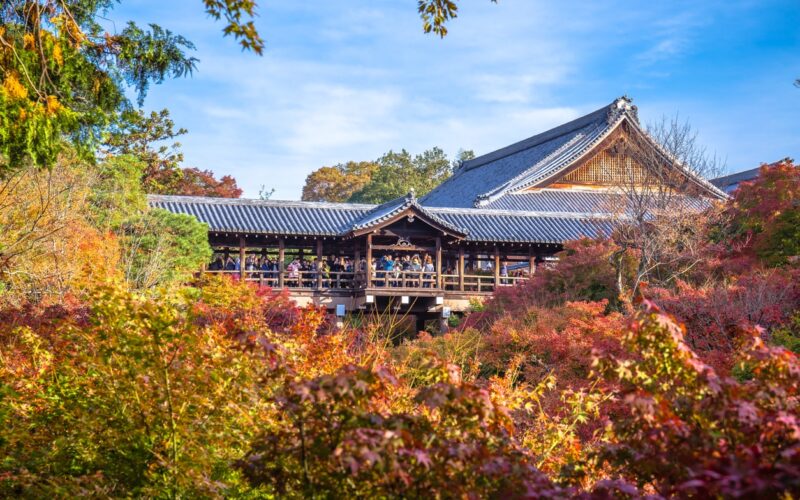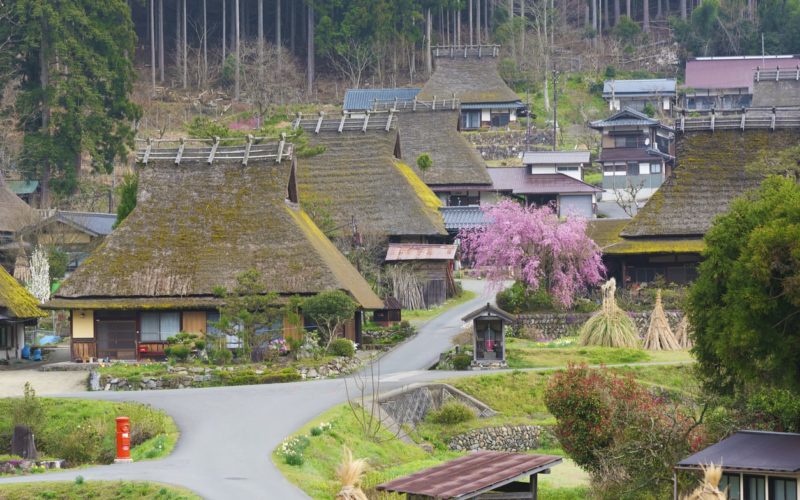Kyoto Gion Festival
Wowing throngs of visitors for more than a millennium.
Kyoto’s famed Gion Festival features dazzling portable shrines and crane dances at Yasaka Shrine, geisha sightings, amazing street food and outstanding people watching.
But its best-known symbols are the 33 floats that are painstakingly constructed, decorated and taken down again each year between July 10 and 24. They vary in shape and size, but the largest weighs in at a whopping 12 tons, their spires reaching up seven stories in the air.
Kyoto’s torrential rains and steamy heat in July make the best of us feel miserable. Before modern science and sanitation, it made people desperately ill. And back in the 9th century, plagues and such were punishment from unhappy spirits. So the Heian emperor ordered a ritual to appease them.
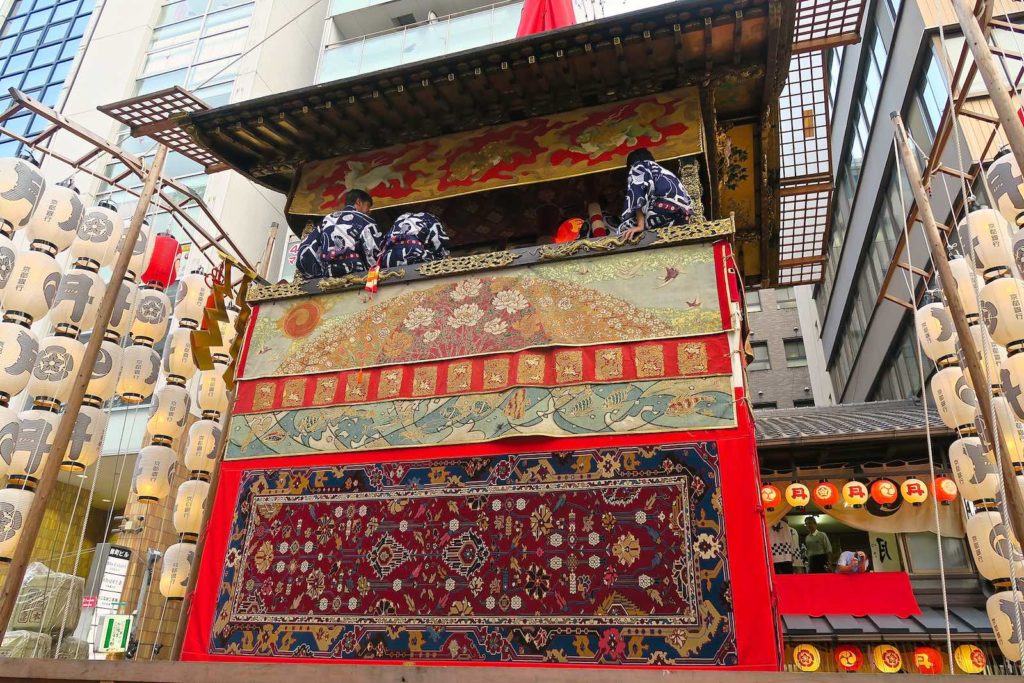
Photo by: that_italian_guy_in_japan Intricated, precious traditional tapestry.
Apparently, it worked. Fast forward 1,100 years and the ritual still happens every July, now one of Japan’s largest celebrations.
The Gion Festival lasts the entire month of July and features many different kinds of events and subfestivals. The best way to enjoy it is to wander around and explore in the cool of the morning and evening. Visit all the display areas you can, to marvel at museum-quality treasures, piled on top of each other in small downtown Kyoto spaces. Stay hydrated and rested.
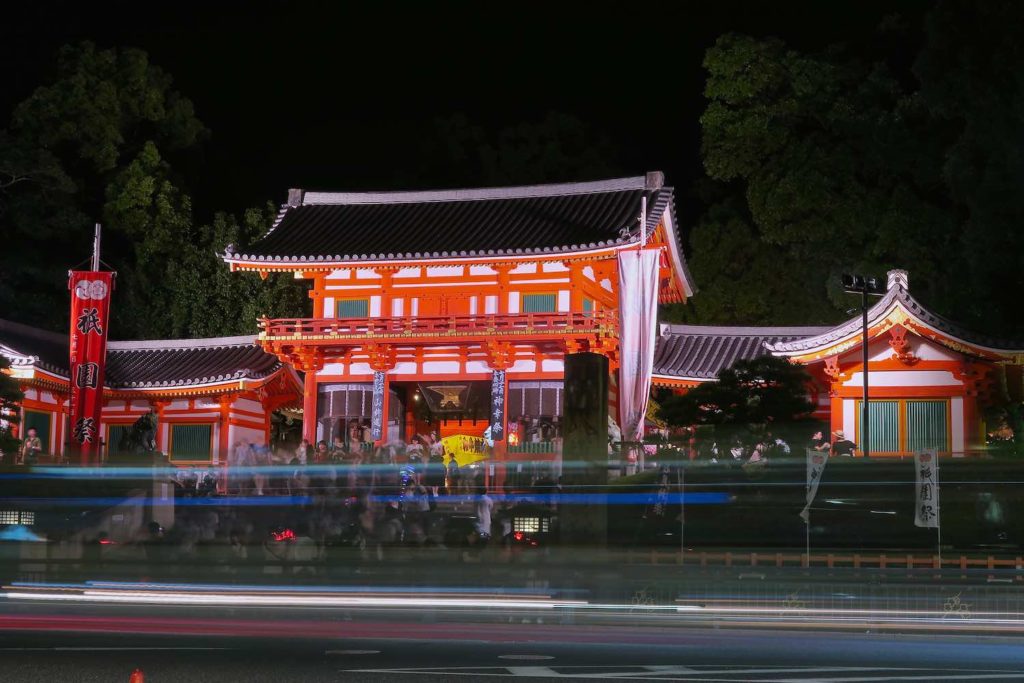
Photo by: that_italian_guy_in_japan Yasaka Shrine during the Kagura.
Each float celebrates a sacred persona from Asian myth or legend. Naginata Boko float still features a living child, considered a medium for the gods who descend from the heavens to purify this human realm.
The Gion Festival may be the world’s most extraordinary community event. Each year volunteers honor tradition by hosting more than a million visitors.
As downtown real estate prices drive out the historical residents who’ve always sponsored the festival, change is certain. Every visitor forms part of the human and divine story of how future generations get to enjoy the Gion Festival.
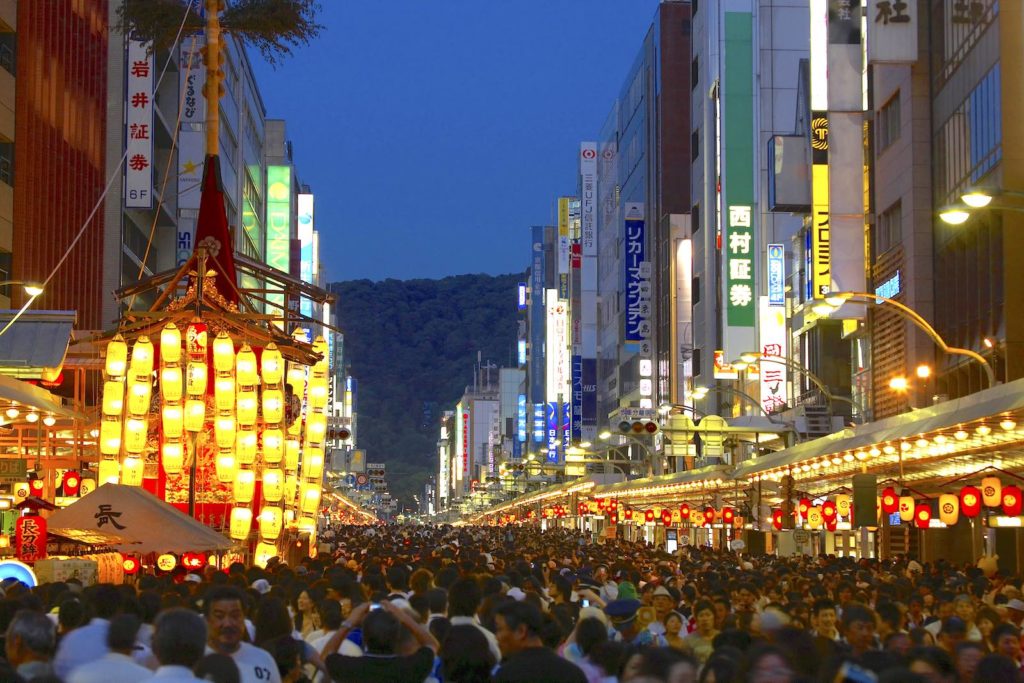
Gion Festival can get extremely crowded so come prepared.
Know before you go
The saki matsuri or “early festival” takes place from July 12-17, while the ato matsuri or “late festival” happens from July 20-24.
The yoiyama and yoiyoiyama crowds on July 16 and 17 are an extraordinarily crowded and not for the faint of heart. The smaller ato matsuri is what the Gion Festival “used to be like.”

